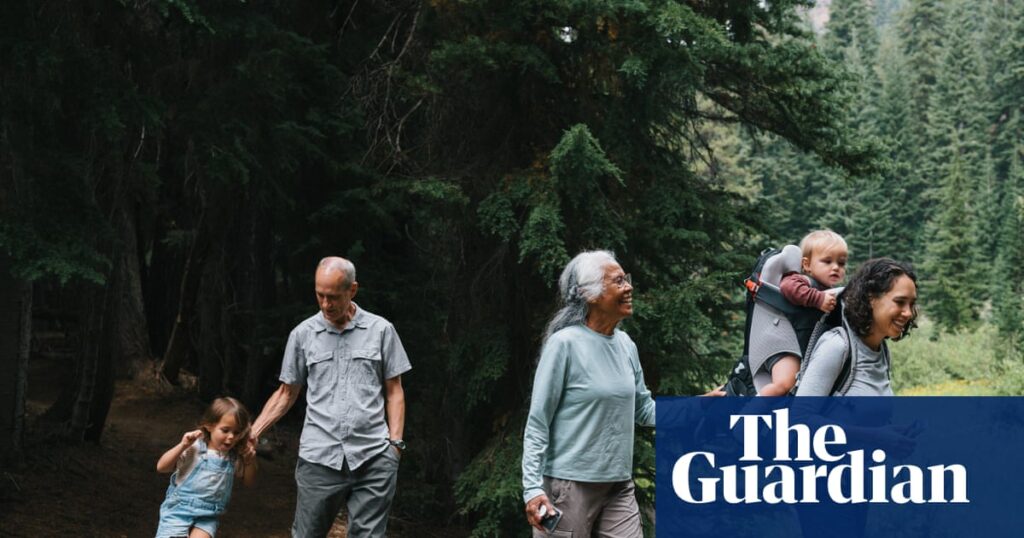“We happen to be alive at this really transitional moment,” said Prof Jane Falkingham, the director of the Centre for Population Change at the University of Southampton. “We’re moving from a world with high fertility and high mortality to a world of low mortality and low fertility. We have to get our heads around how we’re going to make that transition from the old world to the new world.”
Earlier this week, figures from the Office for National Statistics showed the fertility rate for England and Wales had fallen for the third year in a row to reach a record low of 1.41. The rate represents the average number of live children women can expect to have in their child-bearing life.
The figures are part of a long-term trend of declining fertility rates across much of the globe – and experts are still working out exactly what the repercussions will be for our society and economy.
“We’re going to have an ageing population, so we need to think about the ages we start work, the ages we finish work, and how we organise the life course,” said Falkingham. “These are a lot of big policy challenges and we’ll have to think through what the solutions will be.”
Some of the effects are already being felt, with schools in some parts of the UK closing or merging due to declining pupil numbers, and the sector expected to lose £1bn in funding by 2030. In June it was announced that five primary schools in Westminster, central London, would be merged to two, after they reported declining pupil numbers, put down to housing costs and falling birthrates.
Paul Morland, a demographer and the author of No One Left: Why the World Needs More Children, said the sharp decline in fertility rates meant that “instead of just steadily building up the problem for the future, we’re dramatically building up the problem for the future”.
“You’ll start seeing that in schools closing. And what that means is in 20 years’ time, we will have a smaller and smaller number of people of working age. That’s going to make the public finances impossible, and the welfare state unsustainable,” he said.
Dr Rebecca Montacute, the research director at the Social Market Foundation, a cross-party thinktank, said declining fertility rates caused “major economic challenge” in the long term.
“You simply will have fewer people of working age who are able to pay taxes and then actually pay for all of the goods and services that we need in the wider economy. At the same time, you have more ageing people, and they have obviously a heavy cost to the state in terms of the health and social care they need,” she said.
This would leave government with a “stark choice” between reducing public services or bringing in younger workers from abroad, both of which were politically challenging, she said.
However, there are many who say a declining fertility rate is no cause for alarm, and will actually bring environmental and economic benefits due to less consumption and demand for resources.
Dr Joshua Hill, the chief research and operations officer at the charity Population Matters, said: “Tackling biodiversity loss, like rewilding, is easier to do with a lower population, and it also leads to a reduction in pollution and waste.
“For the UK, having a smaller population makes everything easier. It increases our food security. Health crises become lower. We are a small nation with a high population density. Everything is scarce, relatively.”
The UK population is predicted to grow to 86 million by 2100, fuelled by net migration (without migration, it is modelled to fall to 48 million), so Hill argues there is little concern about a declining workforce in the short term. He said the advent of artificial intelligence could lead to a reduced demand for workers anyway.
after newsletter promotion
“I think actually the reality is that joblessness is going to be a far bigger problem than having not enough people,” he said.
There is, however, concern about who will care for our ageing population, and whether our current social care system has the resources to cope, particularly when unpaid, informal support networks – often created by children or younger relatives – are not there.
“The cohort of women born in the 1960s, around 20% of them didn’t have children, so when they move into their 70s, 80s and 90s, we’re going to see more of a focus on the funding of social care,” said Falkingham.
But she said this would probably lead to the emergence of different models of care, such as through friendship groups, or a greater reliance on technology. Japan, for instance, is starting to roll out home-care robots to help look after its ageing population.
But Japan should also act a warning for what could come in the future, Morland said. “People say Japan is not falling to pieces, and that’s true. But it has got massive debt and its innovation and creativity has gone down and down. So it definitely suggests long-term decline, whether that’s government debt or the number of patents,” he said.
Japan has also seen an epidemic of lonely deaths, with 68,000 people expected to die alone and unnoticed this year, the majority of them over 65.
“There is a risk that a lot of older people will be left uncared for,” Morland said. “There’s a lot of dependence of older people on their children, and they just won’t be there to do it. We have three workers for every retiree where we used to have four, five or six, and that’s putting huge pressure on the state.”

